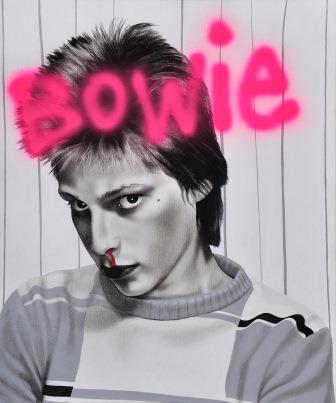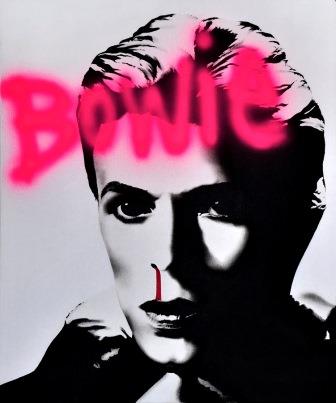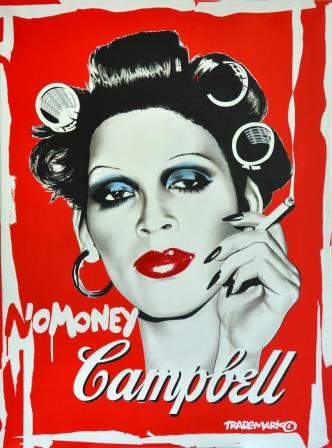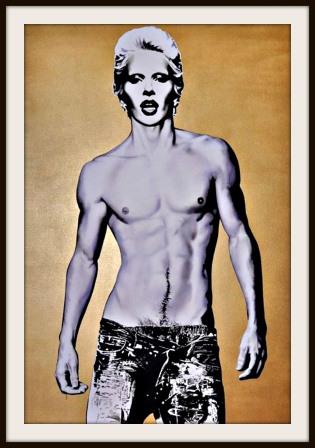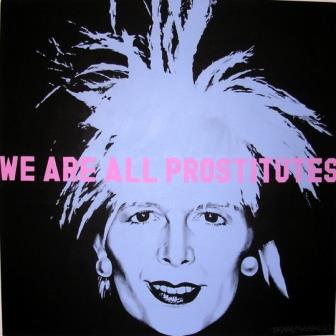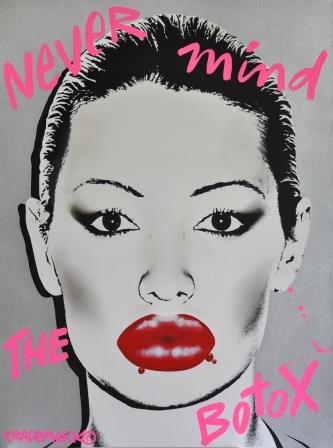
| |||||
|
British artist
Mark Wardel
talks sex, music, Bowie and his new collaboration with Boy George.
Interview By: Steven Jones
|
|
|
Punk Globe: Give us a snapshot of your childhood in New Brighton near Liverpool, UK. What forces and influences acted upon you in those early days to shape the person you've become?
Mark Wardel: New Brighton was still a major seaside resort back then. My relatives all ran businesses in the Tower which was the big fairground at which the Beatles played many of their early concerts. My mother died when I was 8 and I used to lie in bed at my Aunt's house next to the fairground and hear records like "Can't Buy Me Love" by the Beatles wafting through the summer night from the fairground speakers. Summer holiday jobs on the pier introduced me to a soundtrack of Lee Hazlewood and Nancy Sinatra's album which seemed to be always playing through the pier's P.A. system. I had no parents or siblings and so I felt like a loner in a happy seaside town.
Punk Globe: Do you think you were born to be an artist? Or was your creativity inspired by early experiences and the environment you grew up in? Does your desire to create come from nature or nurture?
Mark Wardel: Both, I think. I was an only child and my mother was always at work or in hospital before she died. There didn't appear to be any dad on the scene and so I spent a lot of time on my own drawing, which I think was my way of coping with the circumstances I found myself in. All kids start off as artists and some just never stop. I never stopped.
Punk Globe: When you first began to make art what were you seeking to express?
Mark Wardel: In retrospect, I think I was trying to create perfection in an imperfect world and explore my obsessions.
Punk Globe: Tell us about music, about the songs that really moved you. What was the soundtrack of your early life?
Mark Wardel: Summer in a seaside town back in the 60s and early seventies was great for hearing lots of fantastic music. Like I said, as they were locals there was always a lot (too much really!) of Beatles but also the Stones, who I actually preferred. Then into the very early seventies on the pier you would hear stuff like "Hi Ho Silver lining" by Jeff Beck, "Groovin with Mister Bloe" by Mister Bloe, "Tears of a Clown" by Smoky Robinson "Honky Tonk Woman" by the Stones and Lee Hazlewood and Nancy Sinatra. Then, with glam rock and David Bowie, in 1972 my life changed forever! In my head, I became Aladdin Sane! By then, my summer job was in the "Golden Goose" amusement arcade where I would hang around the jukebox in my nylon overalls, key chain round the neck, platform shoes and full Ziggy haircut rehearsing my Bowie-esque future.
Punk Globe: Did you see your move to London as an escape to the bright lights from the provinces?
Mark Wardel: Yes, very much so. I had a lot of confusing issues going on in my head and had started to realise that I could never fit into a "run of the mill" type of life. I had been fantasizing about this "other" lifestyle, one of panache and glamour which, in London, I actually found.
Punk Globe: Describe the vibe of the Blitz club in the late 70s and early 80's. Did you have any awareness at the time of the impression it would make on British pop culture?
Mark Wardel: I started hanging out with Antony Price, the designer for Bryan Ferry and Roxy Music who introduced me to "all the right people" one of whom, at the time was Steve Strange and so the Blitz became a regular Tuesday night hangout. It was full of amazing looking characters like Boy George, Marilyn and almost the whole of embryonic 80s pop culture most of whom were penniless and living in squats, but also hugely ambitious and competitive so the air was always thick with hairspray fumes and bitching from the countless evolving feuds and fashions all to a soundtrack of frosty euro-electronica from the likes of Gina X and Kraftwerk. Of course, as usually happens, we had no idea that we were living through such pivotal times. One can only really see that from a position of retrospection.
Punk Globe: How has music meshed with your art?
Mark Wardel: Music has always been intrinsically interwoven with my art. I really think a lot of our emotions and our existential makeup is built from the music we hear, particularly as we grow from children into adults. My aesthetics have been totally shaped by music/imagery that can be directly traced back to the influence of Bowie in the 1970s. through, disco, punk and electro onwards. I began painting the characters I met like Boy George and David Sylvian who became friends, which lead on to producing artworks for record covers etc. as they went on to become famous. Later, of course, my artwork imagery for the club "trade" pulled my work into the early house music area like a circuit, constantly feeding back into itself. Music/art/art/music.
Punk Globe: Your work is very glamourous, a fusion of otherworldly beauty and sexuality. Who are your muses, your most potent inspirations?
Mark Wardel: I'm fascinated by artifice and the creation of illusions, constructed identities, artificial persona's, smoke and mirrors, Frankenstein creations. I'm inspired by London and New York in the 70s, Beauty advertising, glam, punk, vintage beefcake, the Cockettes, Andy Warhol, Diana Vreeland and Russian propaganda art.
Punk Globe: You seem fascinated by the human face. What is beauty?
Mark Wardel: Bones! human beauty hangs off and depends on good bones, cheekbones.. for me, the browbone is the most beautiful of all.
Punk Globe: How important is sexual desire to your work? What is the relationship between desire and beauty in your work?
Mark Wardel: Sexual desire is undeniably important in my work. As someone with a voyeuristic sensibility and who was never very comfortable with physical intimacy, I really channel that side of things into my work. However, I do view desire and beauty as two different qualities, for instance I think someone can be very beautiful but totally undesirable and vice versa. Beauty is in the eye of the beholder, desire is further south.
Punk Globe: You've recently collaborated with Boy George. Tell us how this collaboration came about? Did you decide upon themes before work began or was the process intuitive?
Mark Wardel: George and I both came from the collection of kids who were originally inspired by David Bowie's experiments with persona's in the early 70s to go out and create their own alternative identities in which to function outside of the mainstream. So our joint exhibition THIS WAY OUT reflects these concerns, which I think we both, at a similar stage in life realised that a lot of our work and mine in particular was actually about. So the exhibition evolved organically from a shared set of aesthetic references.
Punk Globe: How has your artistic vision evolved over time? What do you seek to express now?
Mark Wardel: I think I started off cataloguing and reflecting the alternative society and social scenarios I was living through which then, as I started producing more promotional club-based stuff in the 90s, moved more into the area of artifice and desire through icons of physical perfection. Now, with a degree of the retrospection which comes with age I find the two areas somewhat merging towards some kind of end point resolution of fact and fantasy.
Punk Globe: What's next for you? Are you working on some new pieces?
Mark Wardel: There are preliminary talks for a larger version of the exhibition to be scheduled for a major museum in 2015. This would feature some of Boy George's stage costumes as well as artworks and ephemera. In the meantime I am working on new paintings and commissions as well as planning a TradeMark book which would be a mix of anecdotes, autobiography and art.
http://www.trademarkart.com https://twitter.com/TradeMarkArt |
|
|

